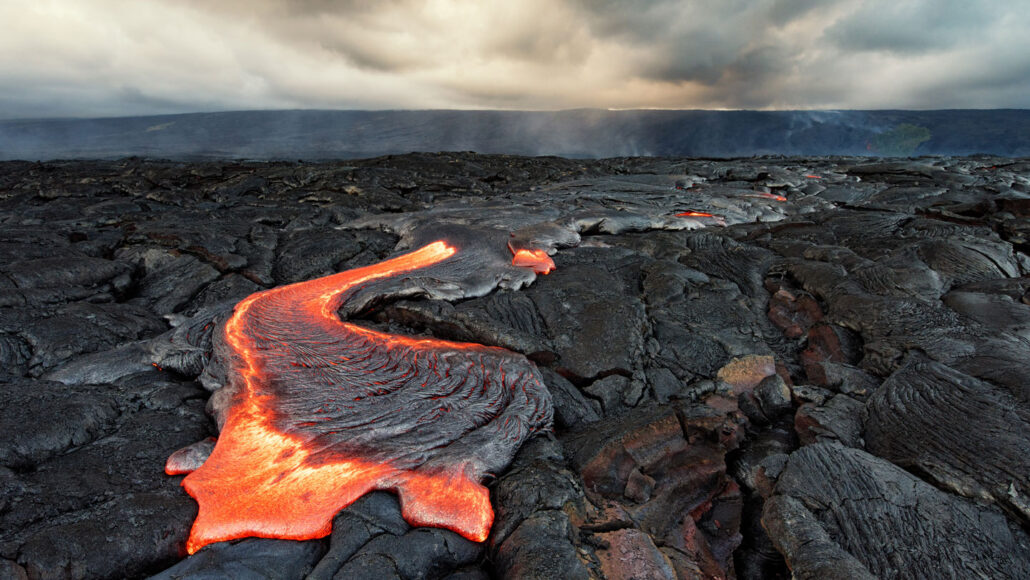chemical: A substance formed from two or more atoms that unite (bond) in a fixed proportion and structure. For example, water is a chemical made when two hydrogen atoms bond to one oxygen atom. Its chemical formula is H2O. Chemical also can be an adjective to describe properties of materials that are the result of various reactions between different compounds.
crust: (in geology) Earth's outermost surface, usually made from dense, solid rock.
lava: Molten rock that comes up from the mantle, through Earth’s crust, and out of a volcano.
magma: The molten rock that resides under Earth’s crust. When it erupts from a volcano, this material is referred to as lava.
mantle: (in geology) The thick layer of the Earth beneath its outer crust. The mantle is semi-solid and generally divided into an upper and lower mantle.
molten: A word describing something that is melted, such as the liquid rock that makes up lava.
solid: Firm and stable in shape; not liquid or gaseous.
volcano: A place on Earth’s crust that opens, allowing magma and gases to spew out from underground reservoirs of molten material. The magma rises through a system of pipes or channels, sometimes spending time in chambers where it bubbles with gas and undergoes chemical transformations. This plumbing system can become more complex over time. This can result in a change, over time, to the chemical composition of the lava as well. The surface around a volcano’s opening can grow into a mound or cone shape as successive eruptions send more lava onto the surface, where it cools into hard rock.








